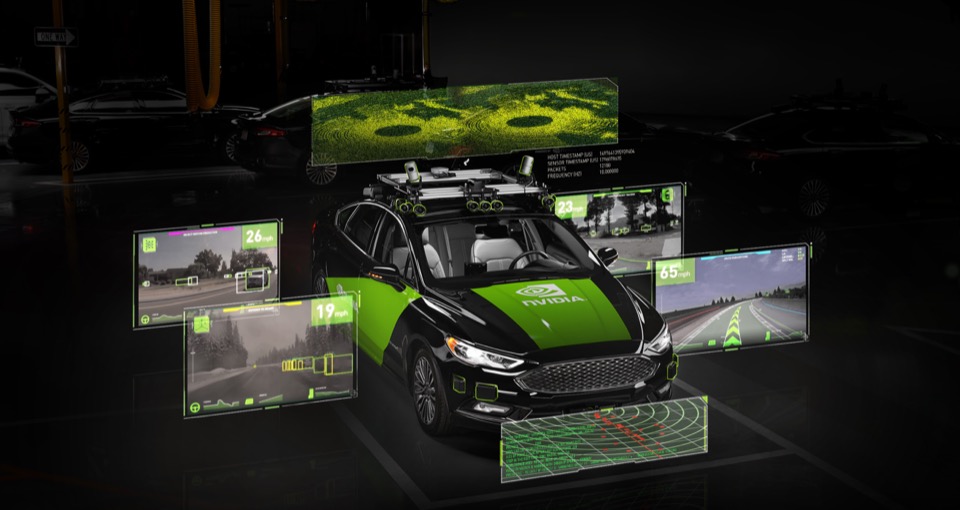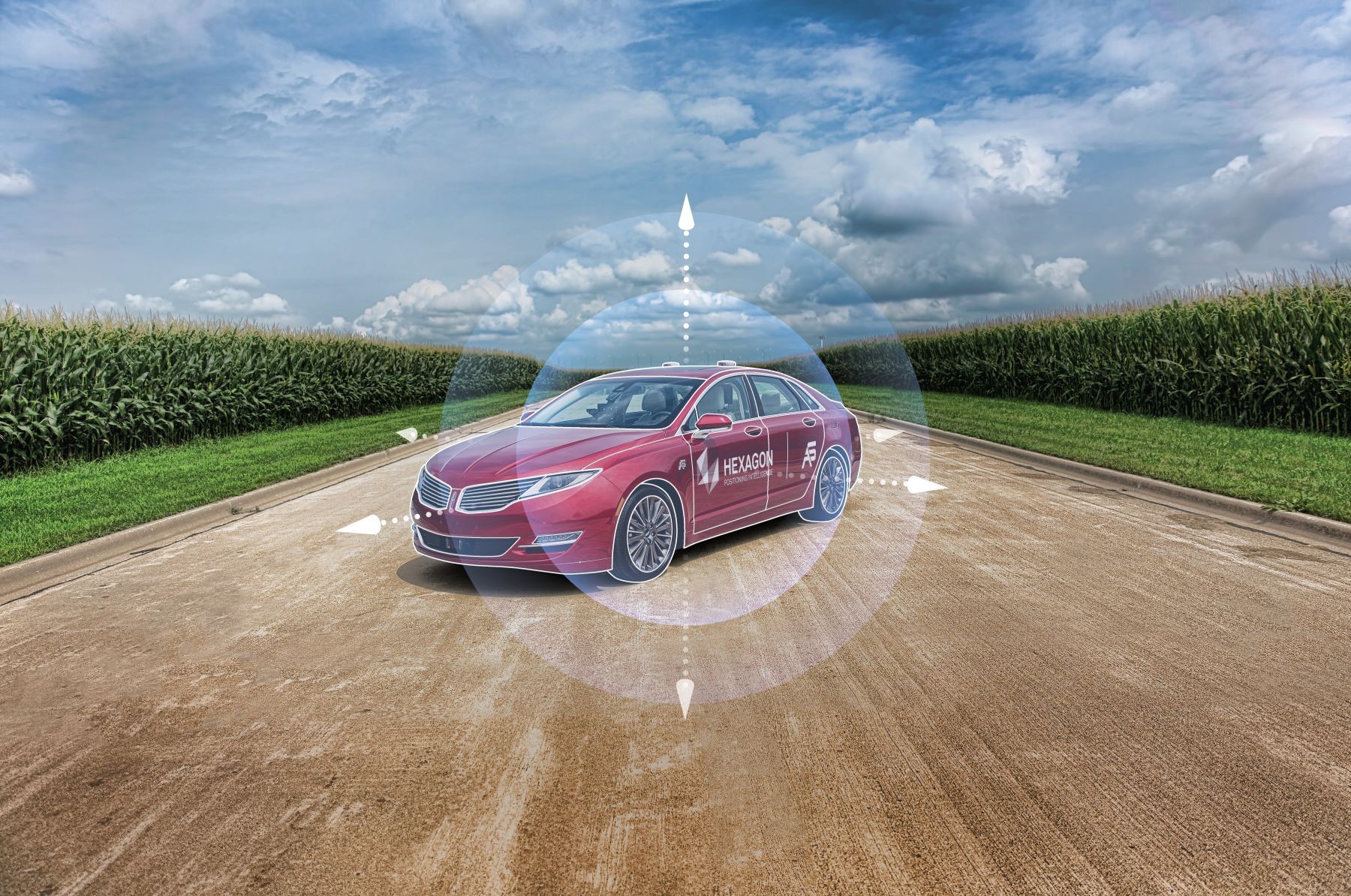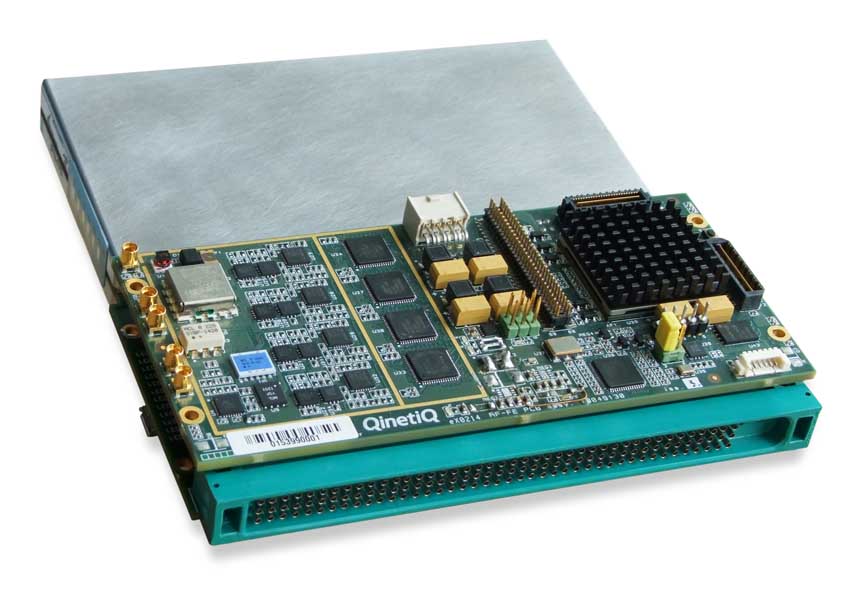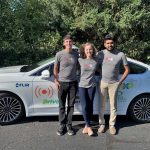Hexagon | NovAtel announced that its PwrPak7-E1 GNSS receiver is now supported on the NVIDIA DRIVE Hyperion autonomous vehicle (AV) development platform. NVIDIA designs system on a chip units (SoCs) for the automotive and mobile computing markets and graphics processing units (GPUs) for the gaming and professional markets. DRIVE Hyperion is a fully operational, production-validated and open AV platform that reduces the amount of time and cost required to outfit vehicles with the technology required for AI features and autonomous driving.
The PwrPak7-E1 delivers SPAN (GNSS +INS) technology from NovAtel in an integrated, single-enclosure solution. Powered by NovAtel OEM7 GNSS engine, the PwrPak7-E1 also has enhanced connection options, including serial, USB, CAN and Ethernet making it a solution for ground truth and high-precision positioning used in development of autonomous vehicles.
NVIDIA DRIVE Hyperion 8 is a computer architecture and sensor set for full self-driving systems. This latest generation technology is designed for the highest levels of functional safety and cybersecurity, and is supported by sensors from a wide range of other suppliers including Continental, Hella, Luminar, Sony and Valeo. DRIVE Hyperion is available today for 2024 vehicle models, NVIDIA founder and CEO Jensen Huang announced at GTC, a 3-day conference hosted by NVIDIA.
The production platform is designed to be open and modular, so customers can easily use what they need — from core compute and middleware all the way to NCAP, level 3 driving, level 4 parking and AI cockpit capabilities.
Selected for its robustness and precise position output, the PwrPak7-E1 will be offered with NVIDIA’s autonomous driving test fleets worldwide. In conjunction with Novatel’s Waypoint Inertial Explorer post-processing software, the PwrPak7-E1 provides ground truth, the critical position reference for autonomous driving software behavior that can be validated.
The GNSS and IMU output of the PwrPak7-E1, along with data from other onboard sensors, are recorded and fed into NVIDIA’s sophisticated autonomous driving development infrastructure and processing pipeline, where data is synchronized, utilized for training AI models, and used in testing of various software components and autonomous driving behaviour.
The NVIDIA DriveWorks Sensor Abstraction Layer streamlines sensor setup with easy-to-use plugins, while DRIVE AV Software contains the deep neural networks for perception, mapping, planning and control.
Sensing New Possibilities
By including a complete sensor setup on top of centralized compute and AI software, DRIVE Hyperion provides everything needed to validate an intelligent vehicle’s hardware on the road.
Its sensor suite encompasses 12 cameras, nine radars, 12 ultrasonics and one front-facing lidar sensor. With the adoption of best-in-class sensor suppliers coupled with sensor abstraction tools, autonomous vehicle manufacturers can customize the platform to their individual self-driving solutions.
This open, flexible ecosystem ensures developers can test and validate their technology on the exact hardware that will be on the vehicle.

DRIVE Hyperion is open and can accelerate the AV industry’s time to market by giving manufacturers the ability to leverage NVIDIA’s own development work. It includes all the tools NVIDIA engineers use to record, capture and process all the data from these sensors in real time. The entire toolset is synchronized and calibrated precisely for 4D data collection, giving developers valuable time back in deploying safe and robust autonomous vehicles.
“High-precision positioning is a key factor for creating autonomous technology,” said Gordon Heidinger, segment manager, automotive and safety critical systems at Hexagon’s Autonomy & Positioning division. “We are excited to be one of the trusted ecosystem partners supporting the NVIDIA DRIVE Hyperion platform.”
“DRIVE Hyperion is designed to give developers the ability to develop, evaluate, and validate AV technology more quickly. NovAtel’s compatibility on our platform provides developers the confidence to synchronize their sensor data with precision location information,” said Glenn Schuster, senior director of sensor ecosystems at NVIDIA.
DriveWorks
Earlier, the two companies announced that NovAtel is compatible with NVIDIA DriveWorks 4.0 software development kit, which provides middleware and development environment purpose-built for autonomous vehicles.
NVIDIA DriveWorks provides middleware functions on top of NVIDIA DRIVE OS that are fundamental to autonomous vehicle development. These consist of the sensor abstraction layer (SAL) and sensor plugins, data recorder, vehicle I/O support, and a deep neural network (DNN) framework. It’s modular, open, and designed to be compliant with automotive industry software standards.
With Driveworks, autonomous developers can leverage sensors for flexible, scalable self-driving solutions. Additionally, new recorder tools streamline data capture for straightforward autonomous vehicle sensor calibration.
NVIDIA DriveWorks 4.0 features include a Sensor Abstraction Layer support for Novatel PwrPak7-E1 SPAN GNSS + IMU module and Hesai P128 Lidar, as well as a Static Calibration Recorder Tool to simplify data capture for AV sensor calibration.






